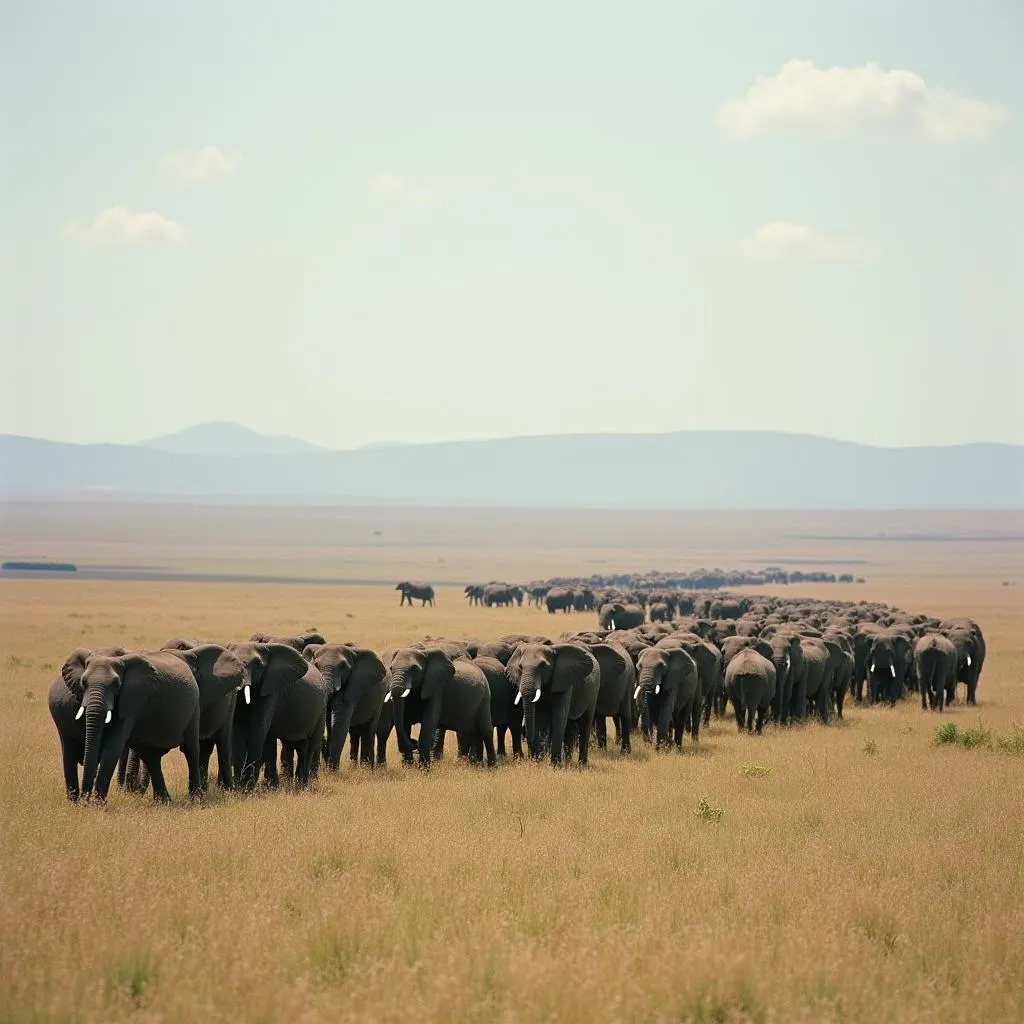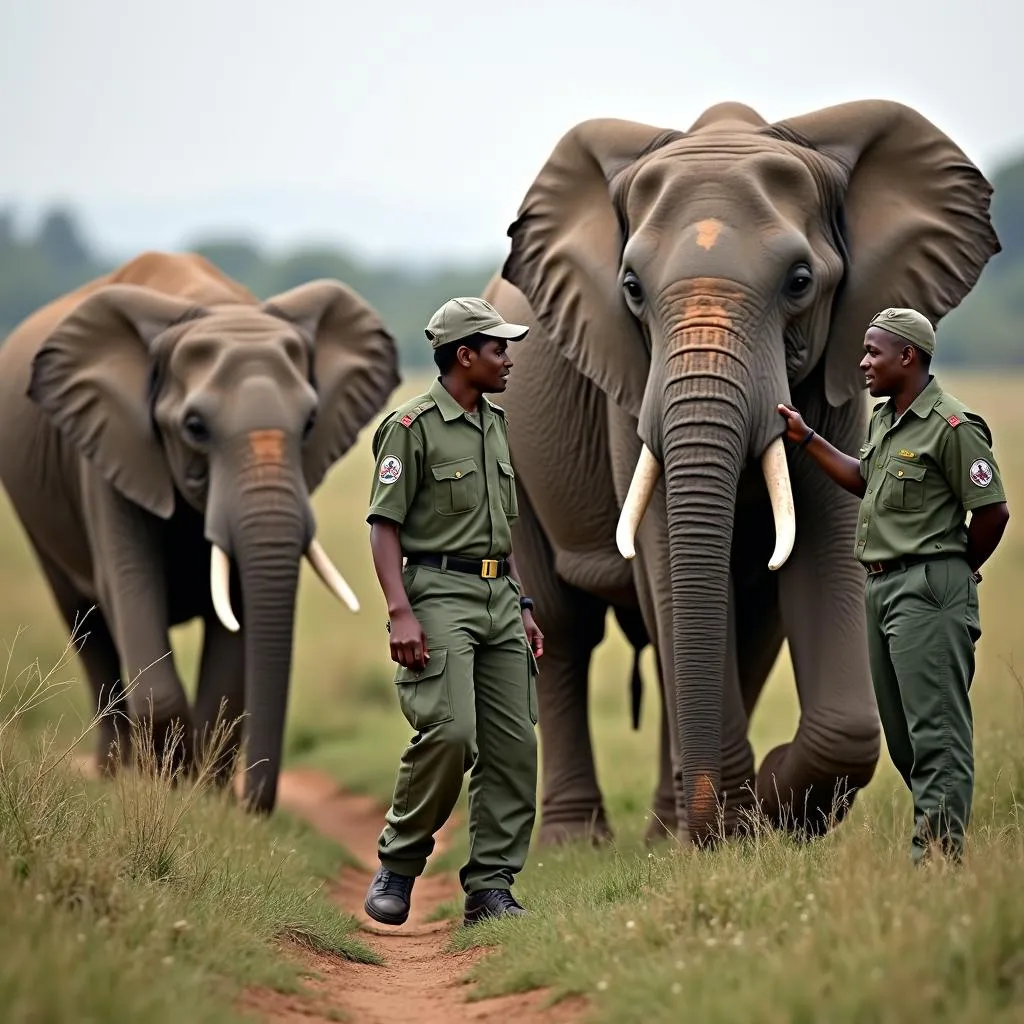African Elephant Population 1970: A Stark Contrast to Today
The African elephant population in 1970 painted a drastically different picture than the one we see today. While today’s numbers tell a concerning story of decline, the early 1970s presented a landscape where elephants, though facing challenges, still roamed in numbers significantly larger than we see now. This period serves as a stark reminder of the rapid decline these magnificent creatures have faced and emphasizes the urgent need for continued conservation efforts.
Understanding the 1970s Elephant Landscape
The exact African elephant population in 1970 is difficult to pinpoint with absolute certainty. Record-keeping was less sophisticated, and consistent, continent-wide surveys were challenging. However, estimations from the time suggest the population was around 1.3 million. This number, while already impacted by habitat loss and poaching, paints a picture of a continent where elephants still held a strong presence.
 African elephants roaming the savannah in the 1970s
African elephants roaming the savannah in the 1970s
Factors Contributing to the Decline Since 1970
The drastic decline in the African elephant population since 1970 can be attributed to a number of factors, all interlinked and compounding the problem.
-
Poaching for Ivory: The illegal ivory trade exploded in the 1970s and 1980s, fueled by increasing demand from international markets. This period saw the decimation of elephant populations across Africa, particularly in Central and East Africa.
-
Habitat Loss and Fragmentation: As human populations grow and land is converted for agriculture, settlements, and infrastructure, elephant habitats are lost and fragmented. This limits elephants’ ability to roam freely, find food and water, and can lead to increased human-wildlife conflict.
-
Political Instability and Conflict: In many regions of Africa, political instability, and conflict have hindered conservation efforts. Lack of resources, enforcement, and political will have hampered efforts to protect elephants.
 The devastating impact of poaching on elephants.
The devastating impact of poaching on elephants.
The Importance of the 1970 Baseline
Understanding the African elephant population in 1970 is crucial for several reasons. It serves as a:
-
Conservation Benchmark: The 1970s population provides a reference point for measuring the success of conservation interventions implemented since then. While the decline has been significant, it also highlights the positive impact that focused efforts can have.
-
Motivator for Action: The stark contrast between the 1970s population and today’s numbers serves as a wake-up call. It underlines the urgency for stronger action, greater investment, and international collaboration to protect remaining populations.
-
Tool for Future Planning: By analyzing the factors that led to the decline since 1970, conservationists can better understand how to address current and future threats. This knowledge is essential for developing effective strategies to protect elephants in a changing world.
Looking Ahead: Protecting Africa’s Elephants
While the decline in the African elephant population since 1970 is a stark reminder of the challenges faced, it is not a lost cause. Numerous organizations and individuals are dedicated to protecting these iconic animals.
-
Strengthening Anti-Poaching Efforts: Increased investment in anti-poaching patrols, technology, and intelligence gathering is essential to disrupt criminal networks and protect elephants from poachers.
-
Expanding and Connecting Habitat: Creating protected areas, wildlife corridors, and promoting sustainable land-use practices are crucial to ensure elephants have the space they need to thrive.
-
Engaging Local Communities: Involving local communities in conservation efforts is paramount. This includes providing alternative livelihoods, promoting education, and ensuring that local voices are heard in conservation decision-making.
 Community involvement in elephant conservation is key.
Community involvement in elephant conservation is key.
The African elephant population in 1970 serves as a reminder of both the challenges and the potential for positive change. By learning from the past and taking decisive action now, we can ensure that these magnificent creatures continue to roam Africa for generations to come.


